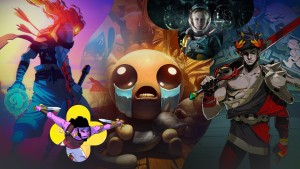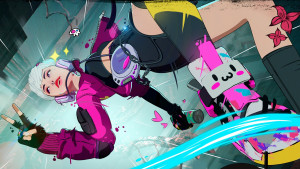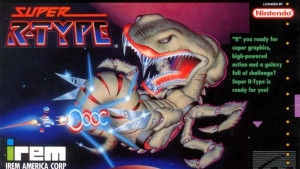Please support Game Informer. Print magazine subscriptions are less than $2 per issue
Super Evil Megacorp's CEO On Predatory Behavior In The Mobile Market And Making 5v5 Happen In Vainglory
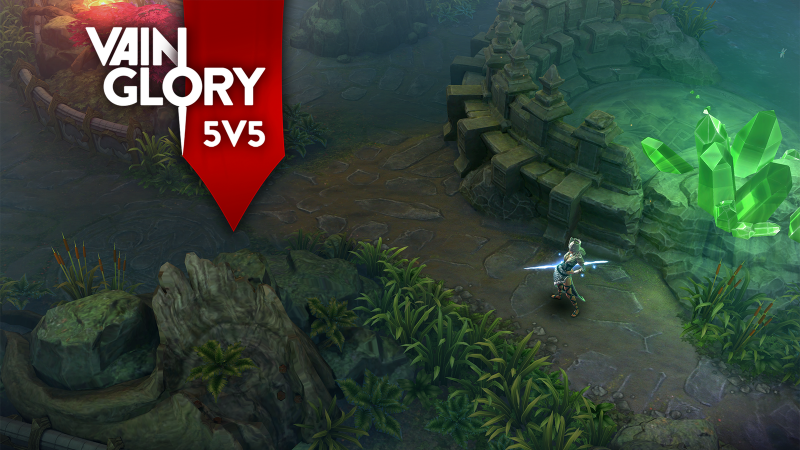
Super Evil Megacorp, the developer behind mobile MOBA Vainglory, has had a busy week.
Today, the developer launched the five-person team modes in Vainglory, raising the number of players per match from six to ten. Super Evil Megacorp held an event to celebrate this launch, showing off the game and inviting fans to watch competitive Vainglory live and in-person, which they did with enthusiasm. Chairs were set up facing a main screen projected on the wall, itself a collective mirroring screens from several phones dotted around the building. Fans were reacting to every twist and turn beamed onto the wall by banging together loud, hollow plastic tubes and screaming their heads off.
Up in the building's loft, Super Evil Megacorp's CEO Kristian Segerstrale was happily mingling among his employees. With a beer in hand, Segerstrale was happy to shake anyone else's hand, and encourage people to snack while they were there. A veteran executive of studios Supercell and Playfish, Segerstrale was oddly inviting, and started our interview asking me questions about Game Informer before I could ask any of my own.
After we were introduced, Segerstrale seemed genuinely interested in whether we covered mobile games, and what kind of games we all like to play. When I told him that we mostly cover consoles and PC, Segerstrale smiled.
We primarily cover consoles and PC, but mobile is kind of a blind spot.
To be honest, in some ways, that's for the right reasons. I mean, mobile gaming has for a long time been a somewhat... like, there have been outstanding games being made by studios, but so much of the business of mobile games has been a cynical monetization attempt at really shallow addiction cycles that ultimately are typical bid-for-power style monetizing angles. Now, as a gamer, it's difficult to give that kind of depth for respecting some ways as a player, you know, compared to the kinds of games that you usually see people sinking tens of thousands of hours in to.
Do you feel like that's a mobile market thing?
Yeah, literally it's a market evolution. If you think about how long it took for PCs and console gaming both to evolve from a place of initial simplicity - I mean, it's fun now playing things that I grew up with and realizing just how janky they were, you know? Even though I loved them to bits at the time, they really were quite janky experiences. But I think gamer culture on PC and consoles has evolved over the past two decades or so from experiences that are kind of expected to work in a certain way to these incredibly rich online multiplayer games that are primarily about community and primarily about content creation.
I think mobile started in a different place because mobile started in a world where things had to be free-to-play for distribution reasons, and hence the first games that you get are not games like Tetris and like say the way that PC or console games started with shooters and the like. There wasn't really a pay $60 upfront and play forever kind of SKU, which is where console and PC games came from. Mobile came from a free-to-play place where, if you have to make it free, how are you going to make some money as a studio, where you have to figure out microtransactions somehow, one way or another. I think that has lead to this evolution of player culture expecting that style of play - short sessions, the proverbial "best of" moment - and having these shallow addiction cycles. Because that's what the industry creates, that's what the players expect, and because that's what the players expect, that's what the industry ends up making. And frankly, could in some ways arguably get away with making for too long.
In this new world, if you can spend a million dollars making a game that makes you ten million dollars, or through shallow addiction cycles, a hundred million dollars for that matter, why would you go through all the effort of trying to create a higher production value game that lasts for thousands of hours? In some ways, the founding philosophy and our mission as a company is to just say that mobile gamers deserve better, that mobile gaming culture will evolve to a point where players... like, humanity hasn't changed, right? And, as gamers, when you have a wake up experience as a player, it takes a certain level of quality and polish and depth in your experience.
Just like as gamers, when you play on a handheld console, you no longer expect a game that is somehow fundamentally dumber than the game you play on your console at home or your PC at home. We believe that's where mobile gaming culture will be all the time.
Has there been an effort with Vainglory to make it specifically less predatory, then?
One of the things Vainglory is about is building for the touchscreen generation. The kind of experiences that we grew up and fell in love with ourselves, which were back then entirely on PC, the sort of LAN party experience where you play all night where it's never about how much money you have spent in a game and is always about your skill and your teamwork and your tactical and strategic precision. We wanted to really build that sense into the game and it's really important to us. Of course, we need to pay our salaries and we want to fund our marketing efforts and things, so there are things to buy in Vainglory, absolutely there are. We are excited that, in the competitive modes, all you can buy are cosmetics and/or unlock heroes quicker than you would otherwise, but it's all competitively balanced. In the quick modes, you can purchase these things called Talents which are basically wacky, crazy abilities to make the five-minute modes a bit faster.
But fundamentally, we are building IP and gameplay, which is all about trying to create an immersive world, where you feel like once you begin to learn the game and understand there's thousands of hours of learning... in some ways, we're standing on top of giants, we admire companies like Blizzard, companies like Riot, and Valve, who have come before us in the PC generation, of going through that effort of evolving their games from the 90s in some cases to get better, and better, and better. They create believable characters, create compelling gameplay with the kind of strategic depth that, as a player, you really respect them, you really feel like this is not just a game for me, this is a thing that I do, it's a hobby, this thing that I play.
So bringing that to the mobile generation has been very much core to our mission as a company. It's crazy how, in the past three years, we've gone from "Why on earth would anyone play a core game on mobile, why would not play it on PC or on console?" to literally having world championships with thousands of simultaneous viewers, right? And fifteen million total views. It just goes to show you that there's a whole generation growing up for whom its dawning that, you know what, this mobile device is my primary companion device, I use it as a communication device, I use it as a media player, I use it as my everything. And you know what, there's now games on this device that I can fall in love with and play for hours and hours and hours that don't just fleece my credit card.
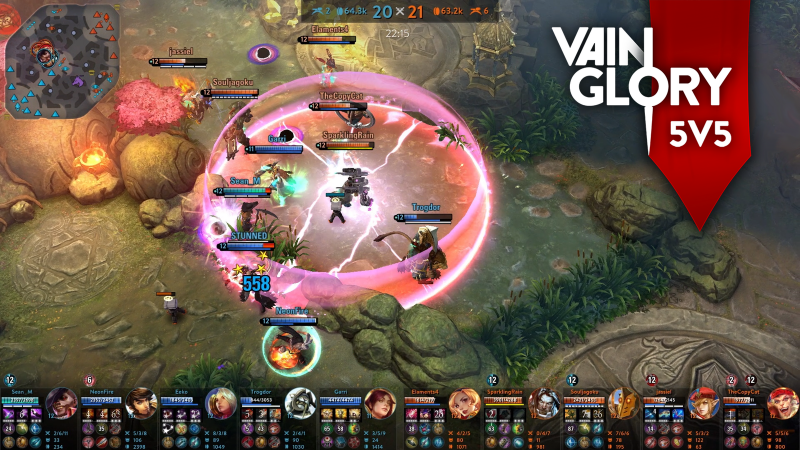
Walk me through the process of deciding how to add four more players to each Vainglory match. What is the genesis of that decision and how do you go about getting it implemented? I can't imagine you can just snap your fingers and go from 3v3 to 5v5.
That's a great question. So, we originally decided for 3v3 as a format because... imagine we were making this game for a platform where everyone was playing Candy Crush. We wanted to make sure, for the first experience we create, on the one hand, it has the kind of framerate and tactical and decision-making gameplay that we ourselves expect from games, but at the same time, from a gamer culture perspective, is somewhat more approachable in terms of multiplayer gaming coming from five-minute single player gaming.
Also, from a tech perspective, rewind back to the devices we revealed the game on, the iPhone 6, and we're very proud of being able to deliver on 60 frames per second solid gameplay on that device at the time. So it was a mix of where hardware was and where gamer culture was, but as we saw both things evolve, ultimately like I said, our mission, our dream was to build uncompromising- like, the experience that we grew up with. I grew up with Unreal Tournament and Warcraft 3, where those games today have obviously in that style of first-person shooter and RTSes and MOBAs have evolved to a place where 5v5 is the canon format, especially for a MOBA.
We started evolving the tech immediately after the 3v3 launch for 5v5, we just didn't know what the timing was. Then we started more seriously exploring 5v5 over a year ago, where we were looking at it as "Okay, we are going to do 5v5 now, let's take the time necessary to make this feel good on mobile." And there are a lot of design innovations, like for example, because we are realistic about control precision and accuracy, because you never want to fight the controls, right? You want to be precise, you want to be able to focus the enemy carry, you want to be able to execute your combos in a way that is precise, right? A lot of us are fighting game players and that sort of exact reaction to precision is native to our animators and our designers, so we're really sticklers for that.
To be able to cater to that, in Vainglory 5v5, you always play left-to-right. We actually do some clever camera mirroring where depending on which team you're on, and you know whether you're on the red team or the blue team at the outset, you always play from left to right on your device. That for example allows us to do things like position the minimap, position the abilities in a way that predominantly expects you to encounter your enemies more on the right side of the screen than the left side of the screen.
Those types of micro-decisions were things that we spent a lot of time agonizing on really early, because wanted with 5v5 not just to make it, but also for it to feel really great. Especially as we saw other products started coming to the mobile market, which were more multiplayer-oriented and used virtual joystick controls which have been imprecise, we wanted to make absolutely sure that by the time that we released 5v5, it feels awesome, it feels strategic and tactical, but also, from a controls perspective, it feels incredible.
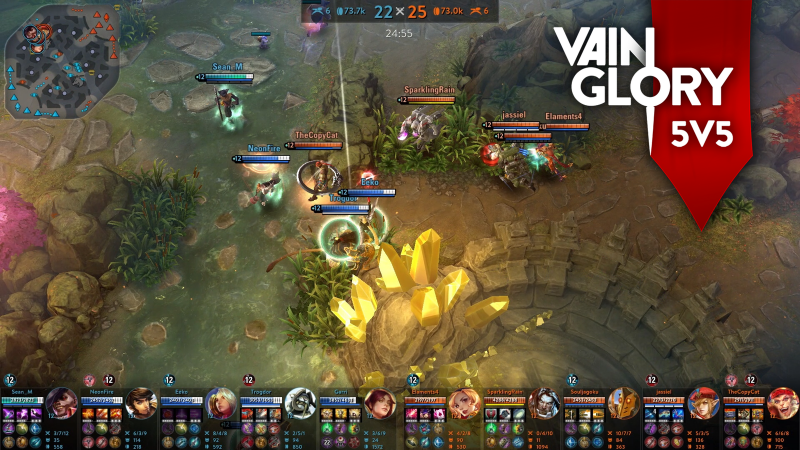
The original decision was just because we went, "Well, this is our dream! This is what we gotta do!" But then the actual design and balancing of it was a really long journey. All of our design is always from our first principles and we are always proud of moving and evolving the industry forward, in the sense that we want to bring that PC-like experience to mobile, but doing this meant bringing a brand-new category forward. Playing left-to-right was interesting, also looking for how to solve some of the movement issues on these larger maps, brings the time of matches down from something like 45 or 50 minutes to something like 20 or 25, while retaining all of the phases of a MOBA and all of the ebb and flow and storytelling of a match.
A lot of that was really stuff like, you know on the river in our 5v5 map, it flows from the center lane to the side lanes, and the river gives you a slight movement buff in the direction of flow. So if you go downstream in the river, it's slightly faster, which means that you can rotate from mid-lane to the side-lanes a little bit faster, which means that you're less safe in the side-lanes, and you're able to create slightly faster rotational strategies. So like lots of little nuance like that. We're real sticklers about game length, where it needs to be long enough where you feel like you've made real strategic and tactical choices throughout that game. You've had a laning phase, you've had a farming phase, you've had a team-fight phase, you've had an objective-taking phase, you've had a push-to-win phase. At every phase, you should have the opportunity to come back, we never want matches to tilt so hard that feel as a backfoot team that you won't be able to come back.
That is a really fine-tuned balancing that takes a long time, so 5v5 has been in testing, if you like, from a gameplay perspective since May of last year, and then in external beta from about August onwards while we kept on enhancing the graphics and things. During that process, when we started, we didn't know exactly can we pull this off with the same hero pool – like, do we have to start moving our hero abilities around, do we have to change fundamental balancing? But we've been really proud that the heroes really have held up, that we don't need to need to have a different balance for them in 5v5 versus 3v3. There's some items in 5v5 which are new and different, predominantly to cater for the vision game, because the map is smaller in 3v3, the itemization around it felt like the right way to approach it. We tried to see if that could carry over to 5v5, but it turns out that it doesn't create interesting vision game and counter-vision game for the map.
Do you have to balance the two modes separately? Are you worried that focusing on one instead of the other will make people unhappy?
Yeah, we worry about that a lot. The truth of that is, when we started developing 5v5, we did not know whether 5v5 ends up in the primary game modes for the game or not, and we always said to ourselves that the community will choose. We tried our very best to create a balancing that works for everything, and we will see, let's see where the community gravitates. Even with the best of intentions, even with the most high-level concepts, the most talented design teams in the world – we have two co-founders that spent a long time at Riot, so we believe we have expertise in this area – you never know how it's going to come out, you know? One of the signs of a mature designer is to be absolutely paranoid about how something is ultimately received. We didn't know.
Around October or November of last year, when things started clicking together, to a point where our community were absolutely adamant that this was the future, of the game... to the point where now we've shifted our entire esports program from 3v3 to 5v5. When we think about bringing heroes to the game, we do want them to play on both 3v3 and 5v5, but unless the community tells us otherwise in the next few months, we are right now considering 5v5 the primary game mode moving forward.
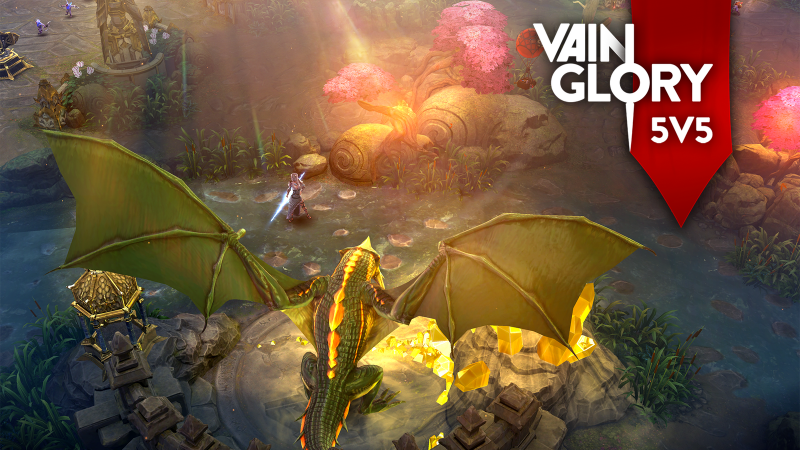
There has been more of a movement in competitive gaming to make the initial step more accessible. Battlegrounds, for example, has a no-nonsense setup to getting in to the game, and Dota 2 has the turbo-Dota modes. Is there a plan for Vainglory to move in that same direction?
We think about that a lot. We think mobile games generally do accessibility very well, in that the hyper-breadcrumb tutorialization have in general that bust-up moment in keeping people's attention, and deliberately we did not start there. Our first attempt with Vainglory was to make sure that there's a "there" there in terms of core gameplay. When people get it, they would get it and we won't focus too much on teaching at the start. But since then, if you now look at where Vainglory has come, now we have a very character-centric tutorialization that really helps people get to grips with basic controls first and introduces the players to the characters and the attitude, if you like.
We think accessibility's important and try to build intuitively accessible experiences that never compromise on the depth of the actual product. For us, if you're going to err one way or the other, we will err on the accessibility end. We just believe that, while it is true that getting people through tutorials and getting people through the early experience is important for any game, we think that where the mobile game market really lets down players right now is in those games that you can play for thousands and thousands of hours, and still discover something new and interesting. Our bias will always be depth.
Stefan, our chief creative designer, he's right around the corner, he has been personally overseeing the overhaul of the tutorialization. He's been very focused on doing research on new players all the time and how do we help people fall in love, how do we teach them enough to fall in love with the depth of this experience, and he's very passionate about it. So I don't want to talk down accessibility, but I want to talk up depth.
Is that the overall goal, then? There are going to be people who never go competitive or never want to go competitive, is the hope to move them from the casual arena to a competitive one?
I want to be cautious about the competitive angle. Vainglory is today the largest competitive multiplayer mobile esport, which we're really proud about, but we don't view that as a goal in its own right. We view that as a litmus test of whether the game is competitively viable enough that there's enough people that like this kind of thing that they like to watch it, and they want to play it, and they can make a living off the back of being professional players. That's cool, it's great, and we love to encourage it as much as possible.
Fundamentally, though, that's not what we set out to create.
We set out to create that feeling - in my case, in the mid-90s, lugging my PC over to a friend's house, playing in a LAN party all night, thinking that I was real good at whatever I was playing back then, which I want to say was Unreal? Maybe I started with Doom originally, then maybe Quake, then Unreal. You know, kind of thinking that you were s**t-hot all the way until you managed to connect to someone else over the internet and then were like, whoa, whoa, whoa, there are other really good players. As it turned out, I was really not s**t-hot at all, but it took me a while to realize that.
But the point is, we want to create an enjoyable, fun experience to play at every level. We don't want to confuse competitively-viable skill sets with being able to have fun at the game. The way we think about it is like, we take a sport like soccer. It's super fun to kick a ball with friends in your backyard, you can play some amateur ball, you can play in a professional league and watch the world championships, right? It's fun, it's the same game, it's equally fun, it's reasonably accessible, you can learn how to kick a ball.
Here, you have a phone, everyone has a phone, and you can play this game on any device you have. It's a thing you can do instead of playing a board game, or playing cards, or playing something else would do around the table. We want you to have fun in your own skill tier in a way that's fun. Helping guide people to that point where they have a lot of fun with the game with friends is, to us, really the game. We want to take it to the point where, for us, gaming played a really important role growing up as a thing that really brought us together with friends. There was a certain connection where you'd play all night and then have to go to school in the morning with those same friends and deeper friendships. Being able to create a game that plays that kind of a role was important to us.
The esports angle, it's so overhyped these days. We're part of it, it's great that it exists, and we're super excited about the [Vainglory esports teams] TSMs and Tribes and Fnatics of the world, and other Vainglory teams, and excited about those partnerships like the Razer partnership and now the ESP partnership... it is, to us, a litmus test. If we do our job correctly creating a super fun game, then that emerges, as opposed to trying to make that. We don't know that that's even possible, we just want to create a super fun game for the community.
Vainglory is available on iOS and Android. The 5v5 update went live today.


